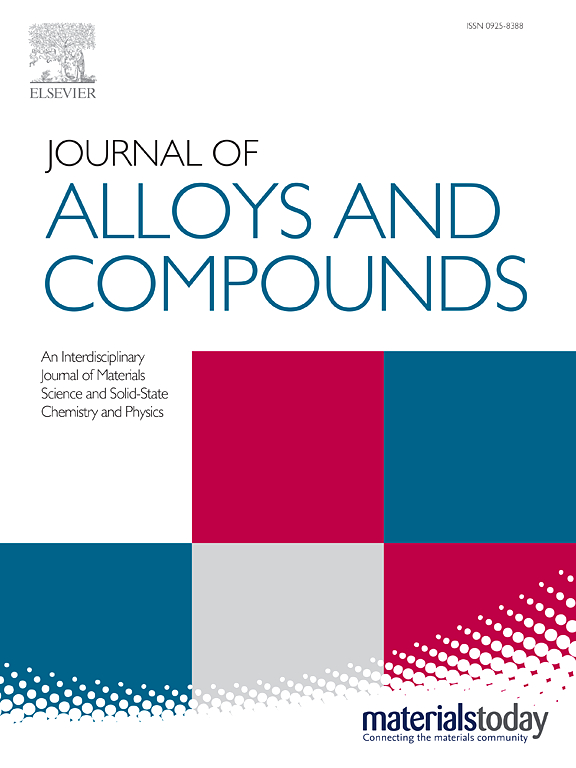Structural evolution and magnetic hardness of (Sm,Zr)(Fe,Co,Ti)12 alloy particles via reduction-diffusion
IF 5.8
2区 材料科学
Q2 CHEMISTRY, PHYSICAL
引用次数: 0
Abstract
The quest for achieving high coercivity in Sm(Fe,Co,Ti)12 alloys, despite their inherent strong magnetocrystalline anisotropy, has posed significant challenges. Recently, (Sm,Zr)(Fe,Co,Ti)12 monocrystalline particles have exhibited coercivity μ0Hc > 1.2 T, showcasing promising prospects and significant potential for both manufacturing and research endeavors. This study delves into the structural evolution of (Sm,Zr)(Fe,Co,Ti)12 (1:12) alloy particles made via the calciothermic reduction-diffusion synthesis process as influenced by the molar ratios of Ca atoms to O2- ions (Ca/O), annealing time and annealing temperature. Critical insight that informs conditions to optimize the magnetic response is gained via systematic experimentation and advanced electron microscopy. Complex structural features, including core-shell morphologies and intricate multiphase compositions within individual particles, are unveiled. An optimal Ca/O ratio of 1.30 produces particles with a coercivity up to μ0Hc = 1.63 T, while higher Ca/O ratios induce the formation of a Sm-rich TbCu7-type (1:7) phase, which only partially transforms into the desired 1:12 phase during annealing. Persistent remnants of the 1:7 phase locally impact atomic structure, particle morphology, and coercivity. These findings underscore the complex interplay between synthesis parameters, resulting structures, and magnetic properties, informing the design and optimization of high-performance permanent magnets comprised of the (1:12) compound.求助全文
约1分钟内获得全文
求助全文
来源期刊

Journal of Alloys and Compounds
工程技术-材料科学:综合
CiteScore
11.10
自引率
14.50%
发文量
5146
审稿时长
67 days
期刊介绍:
The Journal of Alloys and Compounds is intended to serve as an international medium for the publication of work on solid materials comprising compounds as well as alloys. Its great strength lies in the diversity of discipline which it encompasses, drawing together results from materials science, solid-state chemistry and physics.
 求助内容:
求助内容: 应助结果提醒方式:
应助结果提醒方式:


